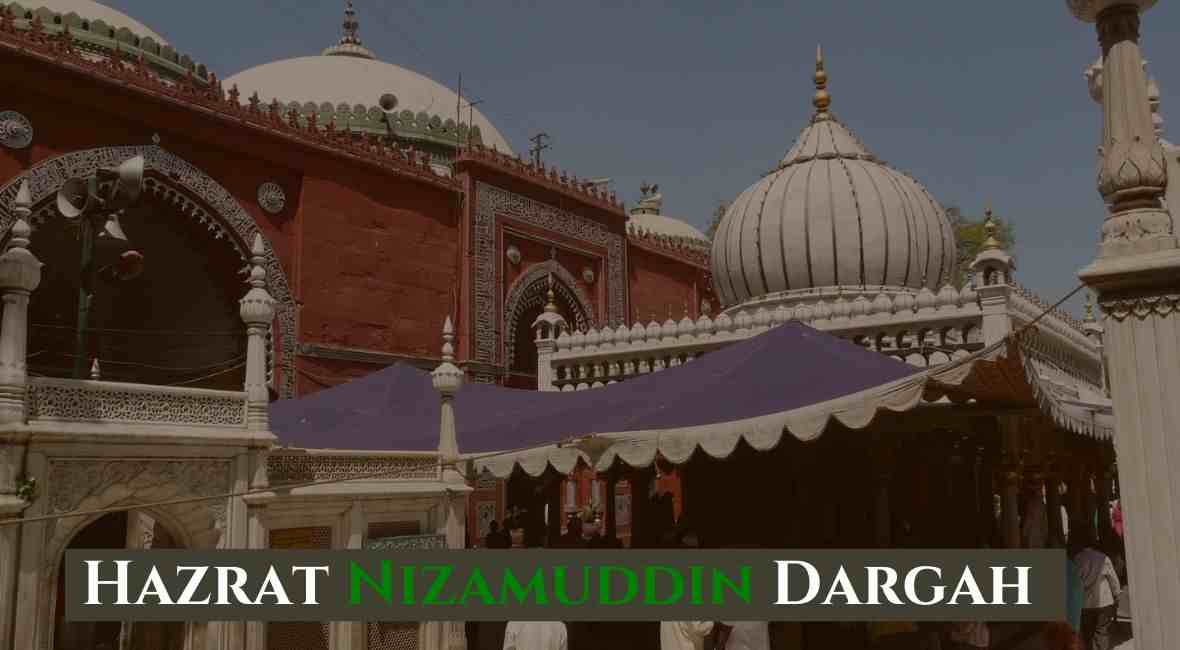Hazrat Nizamuddin Dargah is one of the most famous Sufi shrines in India. Located in Nizamuddin West, Delhi, this dargah is the resting place of Hazrat Nizamuddin Auliya, a revered 14th-century Sufi saint. Every year, thousands of devotees, tourists, and music lovers visit this sacred site, drawn by its deep spiritual energy and enchanting Qawwali nights.
The dargah is not just a religious place; it’s an experience. The moment you step into its bustling lanes filled with the aroma of roses, incense, and traditional delicacies, you feel an instant connection with something divine.
History of Hazrat Nizamuddin Dargah
Hazrat Nizamuddin Auliya was a Sufi saint of the Chishti Order, known for his simple life and deep compassion for the poor. He believed in love and unity, preaching that spirituality is above caste, creed, or religion. When he passed away in 1325 AD, his followers built this shrine in his honor, making it one of the most important spiritual landmarks in Delhi.
The dargah has stood the test of time, witnessing centuries of history, from the Delhi Sultanate to the Mughal era, and even modern India. Today, it remains a beacon of peace, devotion, and Sufi traditions.
Architectural Beauty of the Dargah
The architecture of Hazrat Nizamuddin Dargah is a mesmerizing blend of Mughal and Persian styles. With its intricately designed marble lattice screens (jalis), arched gateways, and a grand dome adorned with gold and turquoise tiles, the dargah is a visual masterpiece.
Inside the complex, you will also find the tombs of:
-
Amir Khusrau – A celebrated poet and the closest disciple of Hazrat Nizamuddin.
-
Jahanara Begum – Daughter of Mughal Emperor Shah Jahan.
-
Mirza Ghalib – The legendary Urdu poet (his tomb is located nearby).
The narrow alleys leading to the dargah are lined with shops selling flowers, chaddars (sacred cloth offerings), and sweets, adding to the vibrant spiritual aura of the place.
Why is Hazrat Nizamuddin Dargah Famous?
🔹 Spiritual Significance – People from all faiths visit the dargah to seek blessings and inner peace. 🔹 Qawwali Nights – Every Thursday evening, mesmerizing Sufi Qawwalis are performed, filling the air with divine music. 🔹 Historic Tombs – The resting place of Hazrat Nizamuddin Auliya, Amir Khusrau, and other historical figures. 🔹 Magical Atmosphere – A place where prayers, music, and devotion create an unforgettable experience.
How to Reach Hazrat Nizamuddin Dargah?
🚇 By Metro: The nearest metro station is JLN Stadium (Violet Line) or Hazrat Nizamuddin Metro Station (Pink Line). 🚗 By Road: Easily accessible by cab, auto, or bus from any part of Delhi.
Timings and Entry Details
⏰ Open daily from 5:00 AM to 10:30 PM. 🎟️ Entry is free, but visitors are expected to dress modestly as a mark of respect.
Tips for Visitors
✅ Visit on a Thursday evening to witness the soul-stirring Qawwalis. ✅ Carry a scarf or dupatta to cover your head before entering the dargah. ✅ Be cautious with valuables, as the area gets crowded, especially in the evenings. ✅ Respect the sanctity of the place by following local customs and avoiding photography inside the shrine.
Conclusion
Hazrat Nizamuddin Dargah is more than just a religious monument; it’s an experience that stays with you. Whether you seek spiritual solace, historical charm, or the magic of Sufi music, this dargah offers a timeless journey into Delhi’s rich cultural and mystical heritage.
These are some more interesting articles for you to explore Delhi
top 5 Haunted Places Of Delhi : दिल्ली की भूतिया कहानिया in 2023 – Ghumoguys
Humayun’s Tomb 2025: A Stunning & Timeless Mughal Marvel in Delhi! – Ghumoguys


I always learn something new from you.